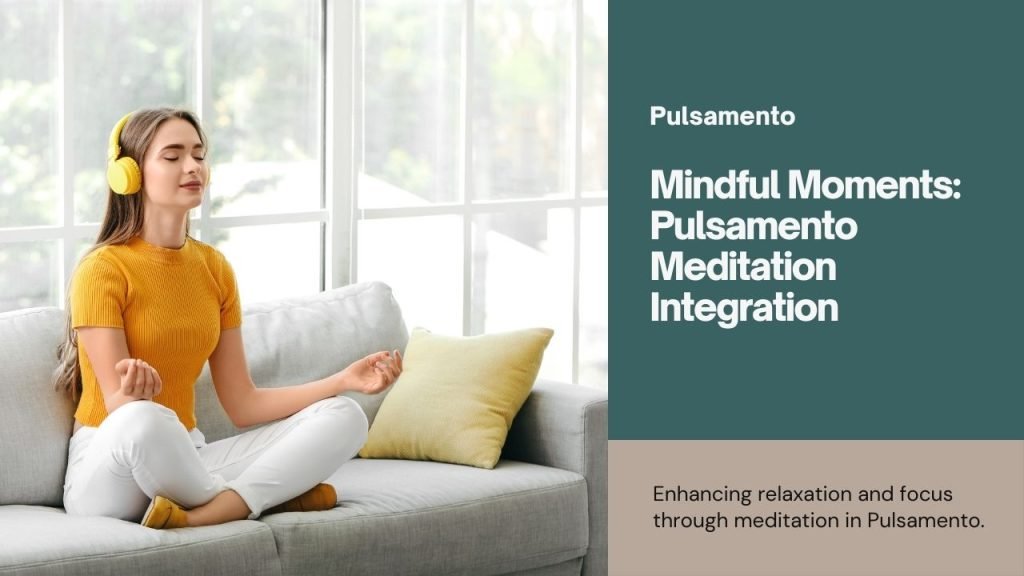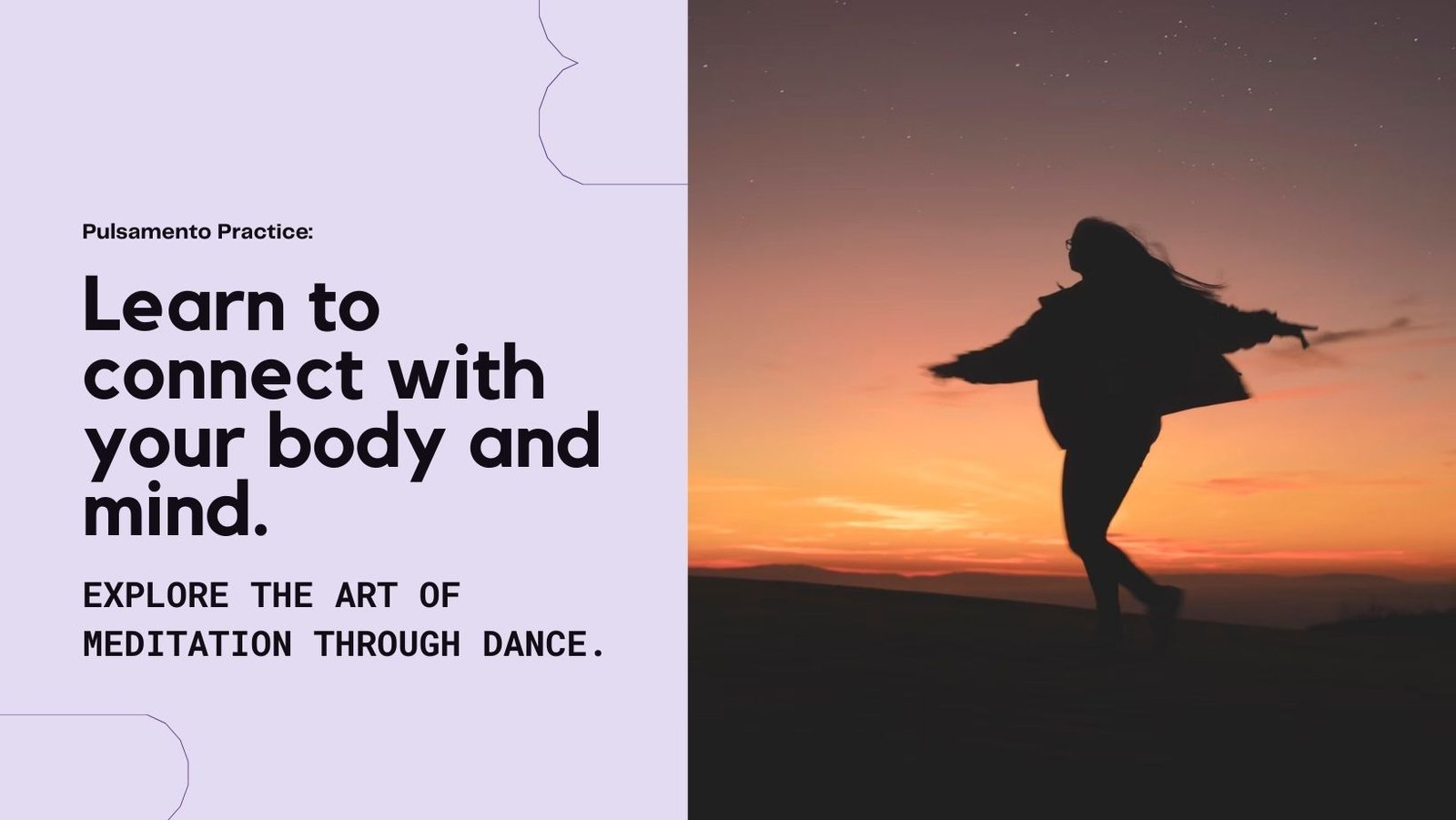Pulsamento is a form of movement meditation that originated in Brazil and has gained popularity worldwide. It combines dance and percussion to create a rhythmic and expressive experience that enhances physical, mental, and emotional well-being. In this article, you will learn what pulsamento is, how to prepare for it, how to perform basic and advanced steps and techniques, how to incorporate meditation into pulsamento, and how to connect with the pulsamento community.
Understanding Pulsamento
The Portuguese word “pulsamento” means “to beat” or “to pulsate”. It refers to the natural pulsation or rhythm that exists within ourselves and in the world around us. Pulsamento is also the name of a movement meditation practice that was developed by Brazilian dancer and choreographer Rosangela Silvestre in the 1970s. She was inspired by Afro-Brazilian dances and music, as well as yoga and meditation practices. She wanted to create a practice that would help people connect with their inner rhythms and express them through dance and percussion.
Pulsamento consists of two main elements: meditative and dance. The meditative element involves tuning into your breath, your heartbeat, and your sensations. The dance element involves moving spontaneously to percussion music, using your body as an instrument. The aim is to flow with the rhythm and feel the joy of movement.
Pulsamento differs from other forms of dance and meditation in several ways. First, it does not have any fixed steps or sequences. You are free to move as you wish, following your intuition and creativity. Second, it does not require any prior experience or skill. Anyone can practice pulsamento, regardless of age, gender, or background. Third, it is not a performance or a competition. It is a personal and communal practice that fosters self-awareness and connection.
Preparing for Pulsamento
Before practicing pulsamento, you need to prepare yourself physically and mentally. Here are some tips to help you get ready:
- Put on loose, comfy clothing that doesn’t restrict your movement. To give your ensemble some flair, you can also accessorize with vibrant or ethnic pieces.
- Choose a spacious and quiet place where you can practice without distractions. You can also practice outdoors, in nature, or in a public space, as long as you feel safe and comfortable.
- Have some percussion instruments or music ready. You can use drums, shakers, tambourines, or any other objects that make sounds. You can also play pulsamento music from online sources, such as Pulsamento Music or Pulsamento Playlist.
- Warm up your body and mind. Do some stretches, shakes, and jumps to loosen up your muscles and joints. Breathe deeply and relax your mind. Set an intention for your practice, such as “I want to feel more alive” or “I want to release some stress”.
You May Also Like: Embrace Mindfulness and Empathy: How LiveaMoment.org Is Transforming Societies
Basic Steps and Techniques
Once you are prepared, you can start practicing pulsamento. Here are some basic steps and techniques that you can use:
- Footwork: The most basic pulsamento step is to shift your weight from one foot to the other, in sync with the beat. You can also add variations, such as stepping forward, backward, sideways, or diagonally. You can also lift your feet, tap your toes, or kick your legs.
- Shifting weight: Another basic pulsamento technique is to shift your weight from one part of your body to another, such as from your hips to your shoulders, or from your chest to your head. You can also twist, turn, or bend your body in different directions.
- Isolations: Isolations are movements that involve moving one part of your body independently from the rest, such as your head, your shoulders, your arms, your hands, your hips, your legs, or your feet. You can also isolate different parts of your face, such as your eyes, your nose, your mouth, or your tongue.
- Undulations: Undulations are movements that involve creating waves or curves with your body, such as your spine, your neck, your arms, or your hips. You can also undulate your whole body, from head to toe, or from side to side.
- Percussive moves: Percussive moves are movements that involve creating sharp or fast sounds with your body, such as clapping, snapping, stomping, or slapping. You can also use your voice, such as humming, singing, or chanting.
These steps and techniques are not rules, but suggestions. You can mix and match them, or create your own. The most important thing is to feel the rhythm and enjoy the movement.
Incorporating Meditation into Pulsamento

Pulsamento is not only a dance, but also a meditation. To incorporate meditation into pulsamento, you need to pay attention to your breath, your sensations, and your emotions. Here are some ways to do that:
- Breathe fully and deeply. Use your breath to energize your movement and to relax your mind. Breathe in through your nose and out through your mouth, or in any way that feels natural to you.
- Feel your sensations. Notice how your body feels as you move. Feel the contact of your feet with the ground, the movement of your muscles and bones, the temperature of your skin, the sweat on your forehead, the wind in your hair, or any other sensation that arises.
- Express your emotions. Let your emotions flow through your movement. Express how you feel, whether it is joy, sadness, anger, fear, or anything else. Don’t judge or suppress your emotions, but embrace them and release them.
- Be mindful. Be present in the moment, without thinking about the past or the future, or worrying about anything else. Focus on the rhythm, the movement, and the breath. Be aware of yourself and your surroundings, without judging or analyzing them.
By incorporating meditation into pulsamento, you can achieve a state of flow, where you are fully immersed and engaged in the activity. You can also experience a sense of bliss, where you feel happy and peaceful.
Advanced Pulsamento Practices
If you want to take your pulsamento practice to the next level, you can try some advanced pulsamento practices. These include:
- Creating your own pulsamento routines. You can design your own pulsamento sequences, using the steps and techniques that you like, or inventing new ones. You can also choose your own music, tempo, and duration. You can practice your routines alone or with others, and share them with the pulsamento community.
- Deepening your meditative aspects. You can deepen your meditative aspects by using more advanced techniques, such as visualization, affirmation, or mantra. You can also use pulsamento as a tool for self-inquiry, by asking yourself questions, such as “Who am I?” or “What do I want?” and listening to the answers that come from your movement.
- Exploring different themes and intentions. You can explore different themes and intentions for your pulsamento practice, such as love, gratitude, healing, or transformation. You can also use pulsamento to celebrate special occasions, such as birthdays, anniversaries, or holidays.
Community and Continued Practice
Pulsamento is not only a personal practice, but also a communal one. You can connect with the pulsamento community in various ways, such as:
- Joining pulsamento classes or workshops. You can join pulsamento classes or workshops, where you can learn from experienced teachers and practitioners, and meet other pulsamento enthusiasts. You can find pulsamento classes or workshops near you, or online, through websites such as Pulsamento World or [Pulsamento Online].
- Participating in pulsamento events or festivals. You can participate in pulsamento events or festivals, where you can enjoy pulsamento performances, demonstrations, and parties. You can also showcase your own pulsamento skills and routines, and get feedback and support from the pulsamento community. You can find pulsamento events or festivals near you, or online, through websites such as [Pulsamento Events] or [Pulsamento Fest].
- Joining pulsamento forums or groups. You can join pulsamento forums or groups, where you can share your pulsamento experiences, stories, and tips, and ask questions or seek advice from other pulsamento practitioners. You can also make new friends and find pulsamento partners. You can find pulsamento forums or groups online, through websites such as [Pulsamento Forum] or [Pulsamento Group].
To continue your pulsamento practice, you can also use various resources, such as:
- Online tutorials or videos. You can use online tutorials or videos, where you can watch and learn from pulsamento experts and instructors, and follow along with their pulsamento routines. You can find online tutorials or videos on websites such as [Pulsamento Tutorial] or [Pulsamento Video].
- Books or articles. You can use books or articles, where you can read and learn more about pulsamento history, theory, and practice. You can also find inspiration and motivation from pulsamento stories and testimonials. You can find books or articles on websites such as [Pulsamento Book] or [Pulsamento Article].
- Apps or podcasts. You can use apps or podcasts, where you can listen and learn from pulsamento experts and practitioners, and enjoy pulsamento music and sounds. You can also use apps or podcasts to track your pulsamento progress and goals. You can find apps or podcasts on websites such as [Pulsamento App] or [Pulsamento Podcast].
Conclusion
Pulsamento is a wonderful practice that can help you improve your physical, mental, and emotional well-being. By practicing pulsamento, you can connect with your inner rhythm and express it through dance and percussion. You can also incorporate meditation into pulsamento, and achieve a state of flow and bliss. Pulsamento is also a way to connect with the pulsamento community, and share your pulsamento experiences and stories.
If you are interested in practicing pulsamento, you can start by following the tips and steps in this article. You can also use the resources and tools that are available online, or join pulsamento classes, workshops, events, or festivals. Pulsamento is a practice that is open to everyone, regardless of age, gender, or background. All you need is a willingness to move, breathe, and feel.
FAQs
How can I find a pulsamento teacher or instructor near me?
To find a pulsamento teacher or instructor near you, you can use online directories or platforms, such as [Pulsamento World] or [Pulsamento Online], where you can search by location, level, or style. You can also ask for recommendations from other pulsamento practitioners, or check local dance studios or community centers that might offer pulsamento classes or workshops.
What are some common challenges or difficulties that pulsamento practitioners face, and how can I overcome them?
Some common challenges or difficulties that pulsamento practitioners face are: finding the right rhythm, overcoming self-consciousness, staying focused, and avoiding injuries. To overcome these challenges, you can: practice regularly, listen to your body, be gentle with yourself, seek feedback and guidance from others, and have fun.
How can I measure or evaluate my progress or improvement in pulsamento practice?
To measure or evaluate your progress or improvement in pulsamento practice, you can use various methods, such as: setting goals and tracking them, recording or journaling your pulsamento sessions, noticing changes in your mood, energy, and health, asking for feedback from others, or participating in pulsamento events or festivals. You can also use apps or podcasts, such as [Pulsamento App] or [Pulsamento Podcast], to monitor your pulsamento progress and goals.

